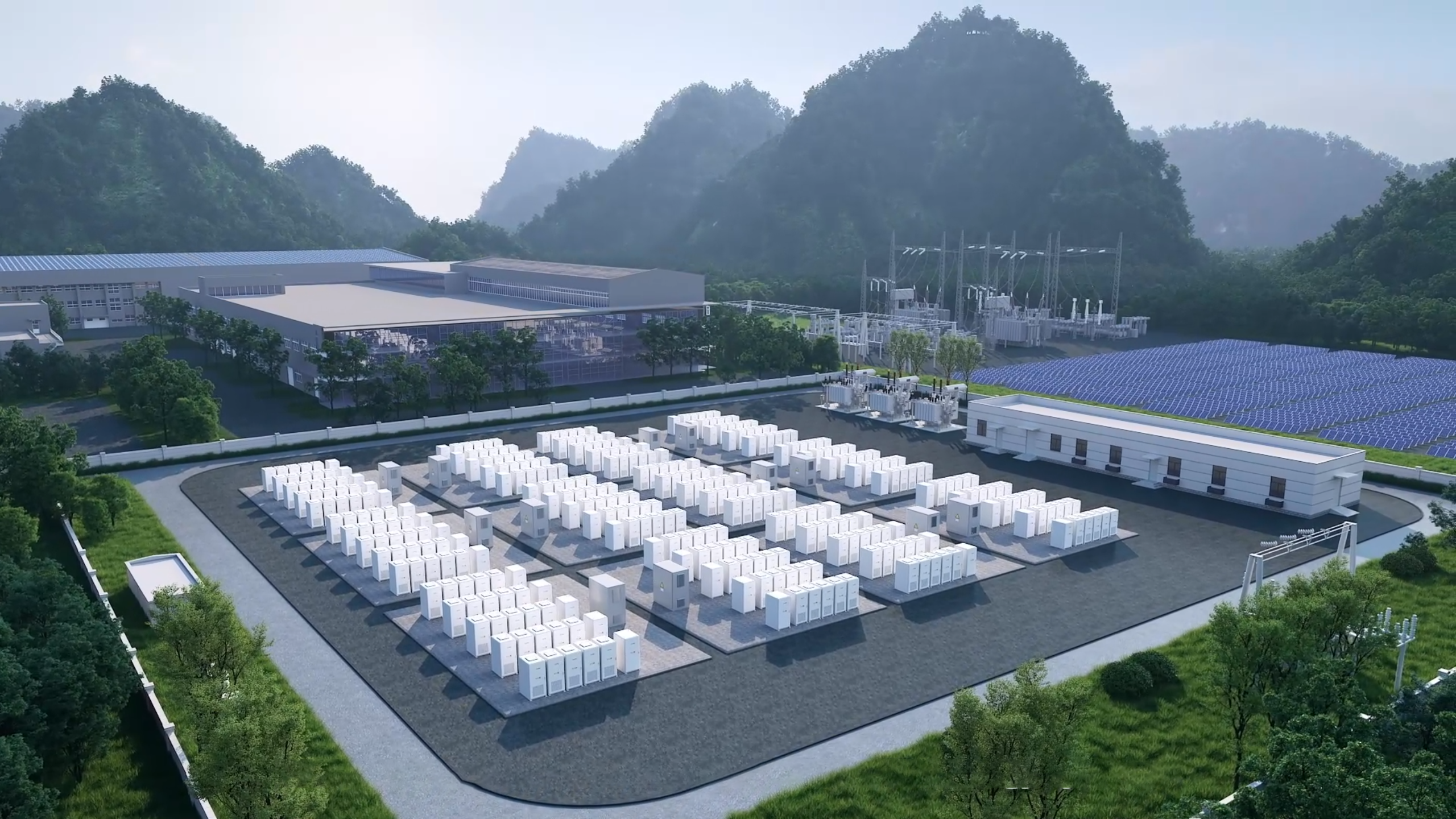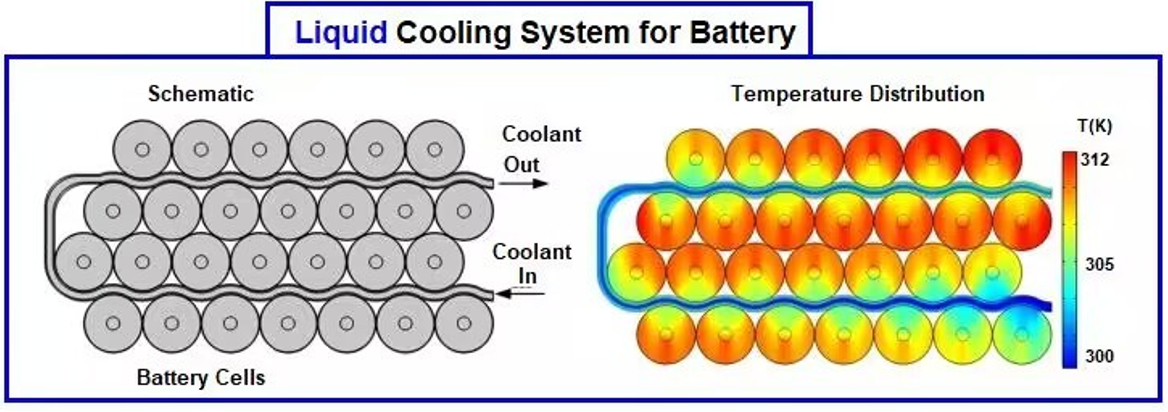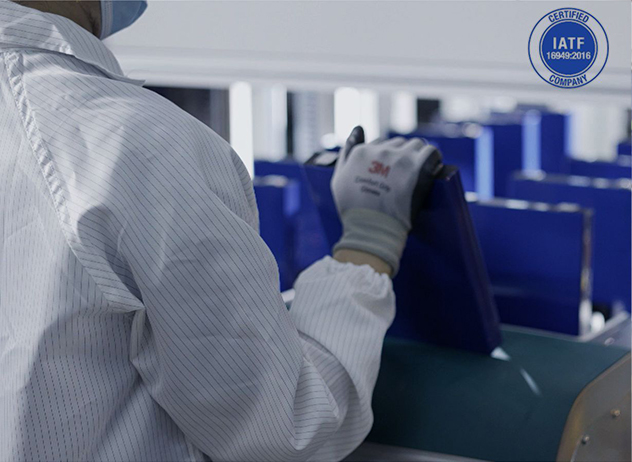How Liquid Cooling Enhances the Stability and Longevity of High-Power Battery Systems

As the global demand for high-power battery systems continues to increase, especially in industries such as commercial and industrial (C&I) energy storage, electric vehicles, and grid support, managing the heat generated during operation has become a critical challenge. High-power batteries, which are subject to heavy load demands, produce significant heat. If not properly controlled, this heat can lead to inefficiencies, safety risks, and shortened lifespans of battery systems. Liquid cooling technology has emerged as a highly effective solution to manage this heat, ensuring that high-power battery systems operate efficiently, safely, and last longer.
High-power battery systems are often used in applications that require large amounts of energy, such as C&I storage, electric vehicles, and large-scale energy storage solutions. However, as these systems work under heavy loads, the heat generated can cause several issues. Excessive heat can reduce the battery’s efficiency, accelerate chemical degradation within the cells, and even pose a serious safety threat in extreme cases, such as thermal runaway. Thermal runaway occurs when the heat generated by the battery cells leads to a self-perpetuating cycle of temperature increase, which can result in fires or explosions. To prevent these problems, efficient temperature regulation is crucial.
Liquid cooling technology offers an effective way to address these challenges. Unlike traditional air cooling systems that rely on airflow to dissipate heat, liquid cooling systems circulate a coolant, typically water or specially formulated liquid, around the battery system to absorb and transfer heat away from the cells. This technology provides a much higher rate of heat transfer compared to air cooling due to the superior thermal conductivity and heat capacity of liquids.
The coolant absorbs heat from the battery cells as they discharge and charge, then passes through a heat exchanger where the heat is released into the environment. The continuous circulation of coolant ensures that the temperature within the battery system remains stable, preventing localized hot spots and ensuring the system operates within its optimal thermal range. This method of cooling is not only more efficient but also more reliable, making it particularly well-suited for high-power applications where maintaining a constant temperature is crucial for performance and safety.

One of the most significant advantages of liquid cooling is its ability to extend the lifespan of high-power battery systems. By maintaining a stable temperature, liquid cooling reduces the strain on the battery’s internal components. Batteries that are exposed to extreme temperatures tend to degrade more rapidly, with their efficiency and capacity dropping over time. With proper temperature management, however, the rate of degradation slows, allowing the battery to retain more of its capacity over its lifetime. This results in longer-lasting batteries that deliver better value over time.
Safety is another critical consideration for high-power batteries, especially in commercial and industrial applications. As the demand for energy storage solutions increases, the risk of overheating also rises. Liquid cooling systems help mitigate this risk by ensuring that the battery temperature remains within safe limits. By preventing the temperature from reaching critical levels, liquid cooling reduces the likelihood of thermal runaway, making it a vital component in ensuring the safe operation of high-power battery systems.
In addition to enhancing the safety and lifespan of batteries, liquid cooling also contributes to the scalability of energy storage systems. As battery systems grow in size, especially in large-scale applications like C&I storage or grid stabilization, the cooling demands increase exponentially. Liquid cooling systems are inherently scalable and can be easily adapted to handle the growing thermal loads of expanding systems. This scalability makes liquid cooling an ideal solution for businesses that need flexible, long-term energy storage solutions that can evolve with their needs.
Furthermore, liquid cooling can significantly reduce the maintenance costs associated with high-power battery systems. By keeping the temperature within the optimal range, the risk of system failure due to overheating is minimized. This reduces the need for frequent maintenance or replacements, ultimately lowering the total cost of ownership.
In various applications, including commercial and industrial storage, electric vehicles, and grid support systems, liquid cooling technology plays a vital role in ensuring the performance, safety, and longevity of battery systems. In commercial and industrial storage, where large-scale energy systems are used to store and distribute power, liquid cooling ensures that the battery operates efficiently across many charge and discharge cycles. For electric vehicles, liquid cooling helps maintain the performance of battery packs during long drives and fast charging, preventing thermal issues that could affect the vehicle’s range and overall performance.
For grid support systems, where large amounts of energy are stored for stabilizing the grid, liquid cooling helps manage the high energy demands of these systems while ensuring that they operate reliably over long periods. In off-grid or remote locations, where the cooling infrastructure is limited, liquid cooling ensures that energy storage systems continue to function optimally, even in harsh conditions.
As the world continues to move towards renewable energy sources, the demand for high-power battery systems will only grow. Liquid cooling technology will continue to play a critical role in ensuring that these systems operate efficiently, safely, and for longer periods. Whether in C&I storage, electric vehicles, or grid support, liquid cooling is a key technology that enhances the overall performance and longevity of high-power battery systems, making them a sustainable solution for the future of energy storage.







